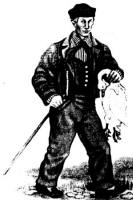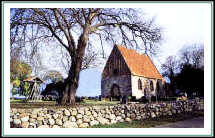|
 The rural areas where our Heidens
originated lies about 30 miles inland from the port city of
Rostock
on the Baltic Sea. It is also about 145 miles from Hamburg and
around 120 miles from Berlin. Güstrow is the district center and
Teterow is a larger town closest to the home area of the Heidens. The rural areas where our Heidens
originated lies about 30 miles inland from the port city of
Rostock
on the Baltic Sea. It is also about 145 miles from Hamburg and
around 120 miles from Berlin. Güstrow is the district center and
Teterow is a larger town closest to the home area of the Heidens.
To locate the tiny villages where our
ancestors lived takes a very detailed map (although now you can find
them with a Google search). August's home village was Groß Wokern or Gross Wokern
(also spelled Gross Wockern on some older maps).
Even today, these burgs are extremely
small. They are rural communities made up of small clusters of
houses and other buildings scattered along short stretches of the roads of the
district. Places like
Klaber and Bergfeld appear to contain only
a few households while Mamerow and Gross Wokern may have a few
hundred inhabitants. When our ancestors left there in the
mid to late 1800s, these places may have been a little larger since the
areas population was much larger at that time...before the great
emigrations.
 It
is a very short distance between the towns and, even in
the days of horse and buggy or, more likely, foot
travel, covering the distances would not be a great
inconvenience. Imagine young August Heiden walking along
the road a few miles in the evening to visit his future
wife, Fredericka. It
is a very short distance between the towns and, even in
the days of horse and buggy or, more likely, foot
travel, covering the distances would not be a great
inconvenience. Imagine young August Heiden walking along
the road a few miles in the evening to visit his future
wife, Fredericka.
Gross Wokern was only 3 miles from Mamerow to the
west and 3 miles from Nienhagen to the south. The closest larger
village, Teteröw, stands 4 miles to the north. Güstrow, the
provincial headquarters is only 12 miles to the west of Gross Wokern. Relatives who moved to the city of
Rostock were only 30
or 40 miles away from the home villages.
Other geographical locations of
significance to the Heidens included the following:
|

